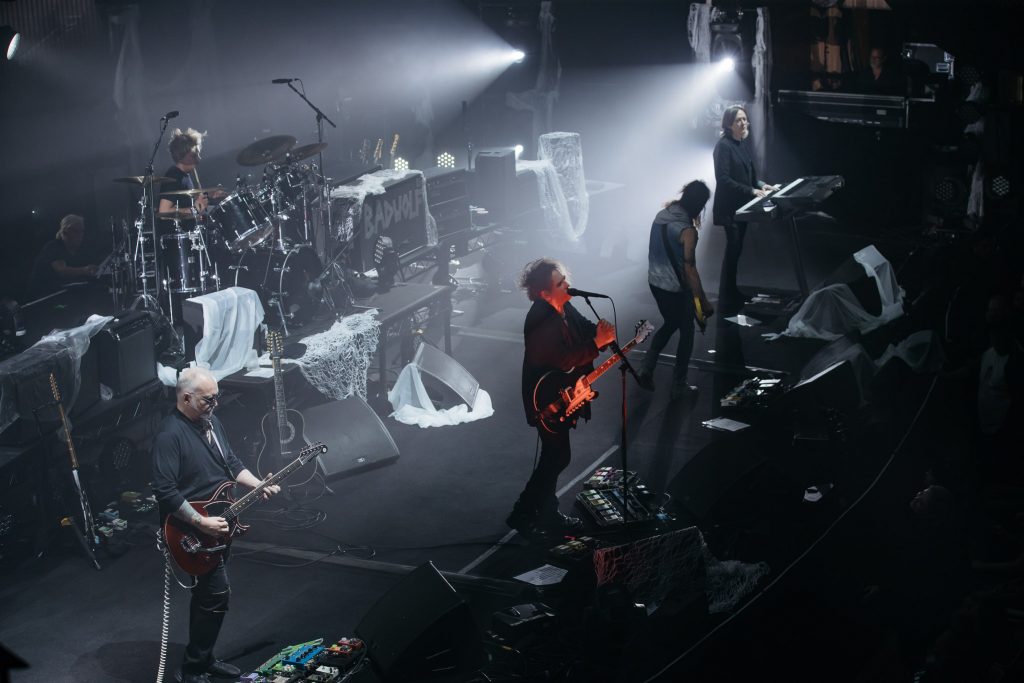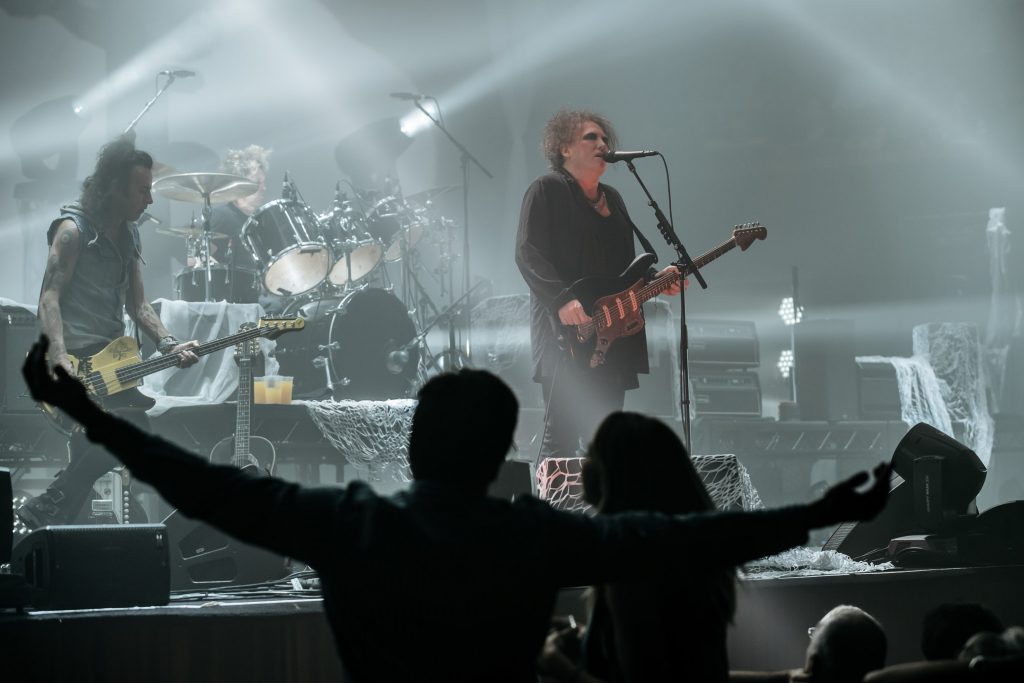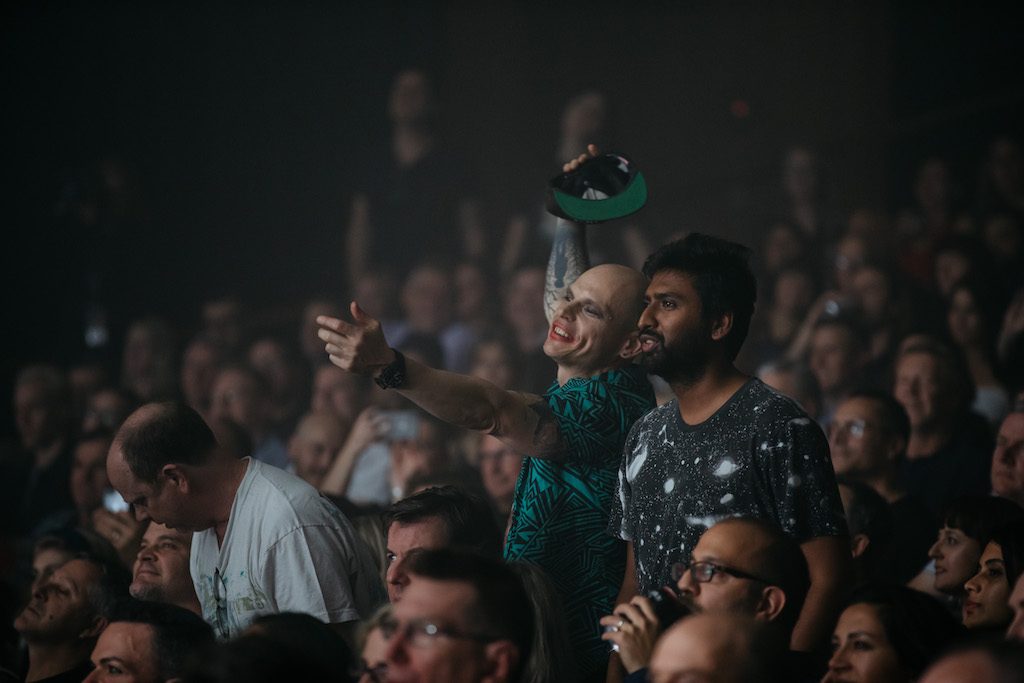How The Cure Almost Ruined Their Near-Perfect Sydney Show
The first hour of The Cure was perfection - the second, not so much.

There’s something masochistic about going to see The Cure.
Sitting in a concert hall listening to Disintegration, their goth-pop masterpiece and the soundtrack to a million broken hearts is a strange experiment in anti-nostalgia; as the album takes most devout fans back to a time in their lives when shit was falling apart. So it’s ironic that this show is a celebration.
To commemorate the 30th anniversary of their most commercially successful and critically adored album, The Cure arrived in Sydney to open Vivid LIVE for a run of five exclusive shows in recognition of Disintegration’s enduring legacy as Ground Zero for emos, goths, self-proclaimed freaks and anyone else who dares to embrace their own vulnerability.
The Opera House seems a touch magisterial for a band who has always existed on the fringes, but as proven during their triumphant 2011 shows, it’s uniquely equipped to do justice to the band’s cinematic soundscapes.

The Cure at the Sydney Opera House. Photo by Daniel Boud.
Robert Smith arriving on stage in an all-black frock on a night where the set list was predetermined was still the least surprising aspect of the evening. And as the band began the album’s playback on Side A1 with ‘Plainsong’, the shared catharsis of the audience was released with a raucous standing ovation that could have made the sails of the Opera House take flight. Hillsong couldn’t muster this kind of excitement on their best day. This was One Direction for Generation X.
Over the next hour they justified every wild gesticulation and exalting scream from the rapturous crowd, as they came as close to perfection in performance as any band ever has at the Sydney Opera House. They may have looked like a rag-tag supergroup with bassist Simon Gallup strutting the stage like he was with Mötley Crüe and keyboardist Roger O’Donnell looking like he’d just recorded Daydream Nation with Sonic Youth, but they executed the melodrama of Disintegration with deft precision, and delicately painted the shades of blue that made the album so intensely personal for so many people.
They executed the melodrama of Disintegration with deft precision and delicately painted the shades of blue that made the album so intensely personal for so many people.
Holding the show together was our inventor of mainstream angst and it was a commanding performance from Smith, whose ageless voice punctured the air with soaring proclamations during ‘Prayers For Rain’, after barely raising it above a snarled whisper on the album’s forgotten first single, ‘Lullaby’.
He’s also a criminally underrated guitarist, and whatever he may lack in technical virtuosity he makes up for with his understanding of tonal balance and harmony, an oft-forgotten quality that sews the emotional threads of Disintegration together. Bands have been trying to recreate the interlocking guitars from ‘Pictures Of You’ for thirty years, and Smith’s connectivity with his guitarist Reeves Gabrels during this stab-to-the-heart pop gem was masterful.

The Cure at the Sydney Opera House. Photo by Daniel Boud.
With backwards-run tapes, delay-pedals-a-plenty and the constant drone of O’Donnell’s synths washing over Jason Cooper’s end-of-the-world drums, the dense texture of the album was fleshed out layer upon layer in the Opera House’s acoustic wonderland. None more so than during the murky prog-rock of ‘The Same Deep Water As You’ and the neo-metal of the title track.
The band did seem to lose its groove during ‘Homesick’, and the façade of perfection seems to slip momentarily, but in a rare moment of interaction with the audience Smith confides that it was “perhaps the best version we’ve ever done live” so who are we as mere mortals to argue?
Dusting off closing track ‘Untitled’ for its first performance in seventeen years, its see-sawing accordion outro subdued the audience as if rocking it to sleep, a beautiful comedown from an intensely emotional hour.
And just like that, it was over. There was a genuine feeling of satisfaction at the conclusion of the album’s performance. The crowd were smug with the knowledge that they’d just witnessed something truly beautiful, a spectacular album brought to life with technical nous and sheer passion.
And that should have been it. We should have all gone home and smiled to ourselves in the mirror at an evening well spent. But we didn’t.

Photo by Daniel Boud.
That was merely Act One, and after a short break, the band returned to play a set of B-Sides and rarities. This premise was enticing, and it had the potential to be another mind-blowing experience; they could have finally dusted off ‘Killing An Arab’ — a reference to Albert Camus, calm down — or perhaps fan-favourite ‘Just One Kiss’ or ‘How Beautiful You Are’ from the Kiss Me, Kiss Me, Kiss Me years.
But no, instead the crowd were instead treated to a number of never-heard-before instrumental demos that Smith & Co had resurrected from the cutting room floor of the Disintegration sessions in 1988.
It was a meandering and empty finish as the performance devolved into a jam session.
It was a baffling and underwhelming decision by the band and the juxtaposition of them revelling in the adulation of songs the fans had listened to thousands of times to indulging themselves in offcuts no one had ever heard was stark. “I can kinda see why they didn’t make it onto the album now,” Smith meekly confessed to us afterwards, perhaps sensing the vacuum of energy he was now performing in.
For the completist and most rabid fan, this choice of set might have been interesting, and the B-Sides ‘Fear of Ghosts’ and ‘Delirious Night’ were by no means terrible songs — but played in the shadow of Disintegration it was a meandering and empty finish as the performance devolved into a jam session. After a curious sea-shanty called ‘Pirate Ships’, Smith again thanked the now thoroughly confused audience and left the stage for the evening.
After what was maybe the greatest half of a concert ever witnessed, the shocked crowd were left consoling themselves with the memory of that first glorious hour while wondering what could have been.
Chris Lewis is a writer and critic based in Melbourne. He is on Twitter.
Lead Photo: Sydney Opera House/Daniel Boud


